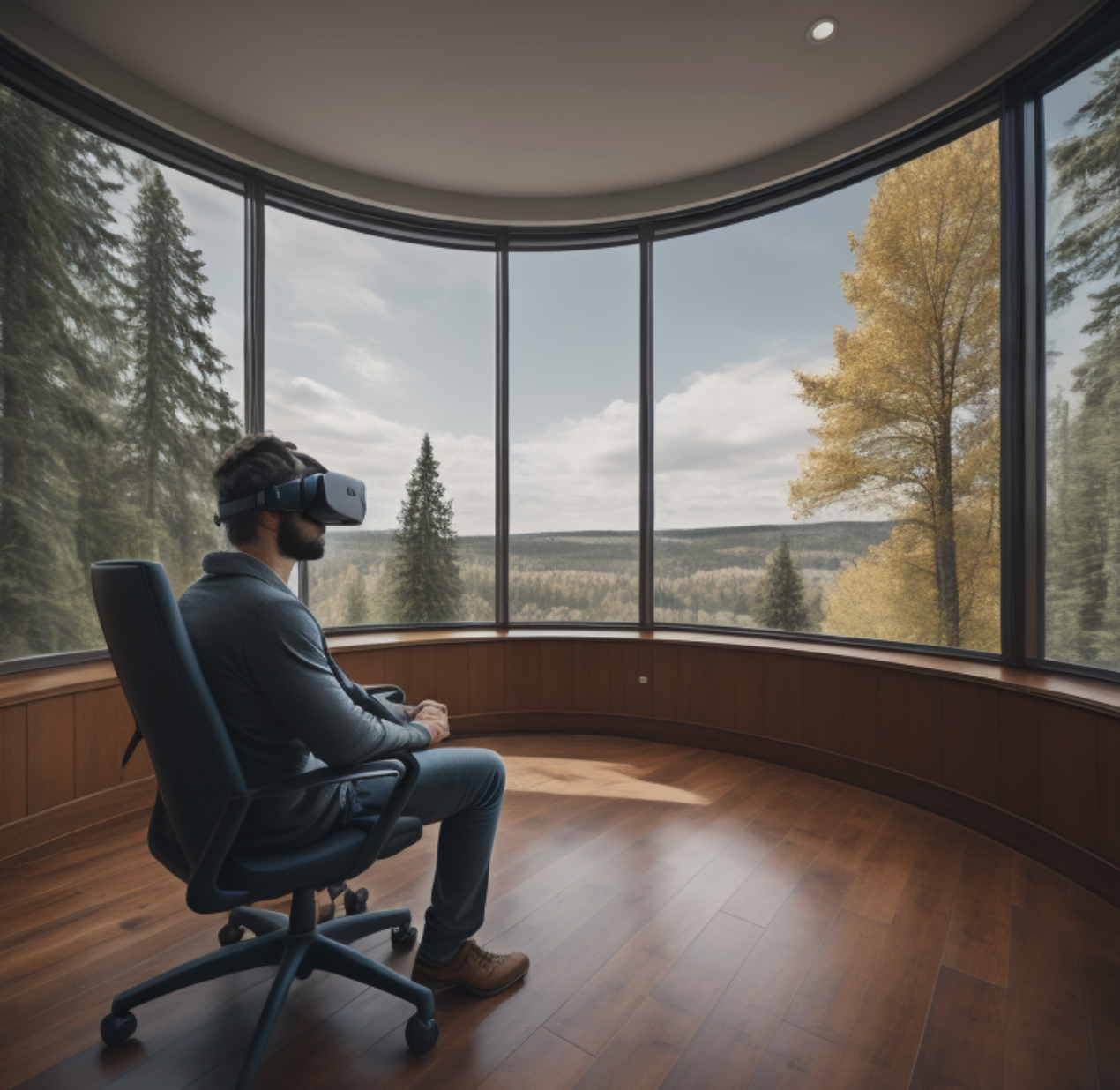Exploring the Convergence of 8D Audio and Virtual Reality for Enhanced Healing
The integration of 8D audio with virtual reality (VR) nature scenes represents a pioneering approach in the realm of digital therapeutics, offering a...
2 min read
 Nerdle
:
Aug 5, 2023 3:26:55 PM
Nerdle
:
Aug 5, 2023 3:26:55 PM

In recent times, major advancements in virtual reality (VR), artificial intelligence
(AI), and audio technologies are transforming therapeutic practices in exciting new
ways. The amalgamation of these cutting-edge innovations is creating remarkably
realistic and responsive environments that are redefining certain treatment
modalities, such as exposure therapy and pain management. This technology-
powered approach is unlocking immense potential to custom-tailor treatments and
dramatically enhance patient outcomes.
Virtual reality has emerged as an exceptionally valuable therapeutic tool, especially
for psychological treatments. VR developers can digitally construct lifelike
simulations of various environments, situations, and interactions. This allows
patients to undergo experiences akin to real life within the safety and control of the
virtual realm. VR exposure therapy, for example, is already demonstrating
tremendous success for anxiety disorders. By methodically confronting fears in VR,
patients can gradually become desensitized through this advanced form of
systematic desensitization. The treatment is also more convenient and cost-
effective over time relative to real-world exposure therapy.
Additionally, VR is being employed for pain distraction during medical procedures.
The immersion in soothing virtual environments can significantly shift patient focus
away from discomfort, resulting in less reliance on pharmaceutical pain relief. This
technique applies the psychological concept of selective attention, whereby VR
captures attention to reduce perceived pain.
Artificial intelligence heightens the customizability and responsiveness of VR
therapy. Sophisticated AI algorithms can process patient data to intelligently modify
VR experiences in real-time. Treatments can thus be dynamically tailored to each
individual, as the VR encounters change in response to the patient's ongoing
reactions and progress. AI embodiment within virtual characters also promotes
engaging patient interactions and delivers customized guidance. Overall, AI
integration with VR therapy enables truly adaptive and personalized treatment
journeys.
While VR visuals facilitate immense immersion, audio is an equally vital sensory
component. Advancements in sound technology, particularly the emergence of 8D
audio, are synergizing with VR to produce unprecedented realism. 8D audio’s
astounding depth and acuity mimic life-like soundscapes across the full compass of
human hearing. When integrated with VR, these ultra-nuanced sound environments can profoundly heighten the perception of presence. For relaxation therapies, 8D
audio can replicate calming natural ambiance to boost stress relief. By addressing
both visual and auditory perception, VR treatments become profoundly more
immersive.
In summary, the integration of VR, AI, and high-fidelity sound holds remarkable
potential to transform therapeutic practices. As this technology continues maturing,
clinicians can leverage it to customize and enhance a wide spectrum of treatments,
paving the way for the next generation of digitally augmented therapies. Patients
worldwide stand to benefit immensely from partaking in these pioneering evidence-
based treatments.
Sources:
Freeman, D., Haselton, P., Freeman, J., Spanlang, B., Kishore, S., Albery, E., ... &
Nickless, A. (2018). Automated psychological therapy using immersive virtual reality
for the treatment of fear of heights: a single-blind, parallel-group, randomized controlled
trial. The Lancet Psychiatry, 5(8), 625-632.
Shiban, Y., Fruth, M. B., Pauli, P., Kinateder, M., Reichenberger, J., & Mühlberger, A.
(2016). Treatment effect of virtual reality exposure therapy in panic disorder with
agoraphobia: A randomized controlled trial. Psychotherapy and Psychosomatics,
85(3), 159-166.
Matheve, T., Batliner, A., Krajewski, J., & Vogt, T. (2019). Empathic Virtual Agents for
Behavior Change - The Case of E-Coaching. In Proceedings of the 18th International
Conference on Autonomous Agents and MultiAgent Systems (AAMAS '19) (pp. 1695-
1697).
Kleiner, M., Hummersone, C., & Francombe, J. (2015). Perceptually motivated audio
rendering of virtual environments. Journal of the Audio Engineering Society, 63(9),
678-689

The integration of 8D audio with virtual reality (VR) nature scenes represents a pioneering approach in the realm of digital therapeutics, offering a...

Have you ever heard of 8D sound or spatial audio? These are two terms that have been gaining popularity in the music and audio industry, especially...

Introduction: Phobias can be debilitating, hindering individuals from leading a fulfilling and unrestricted life. The fear associated with phobias...